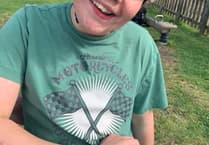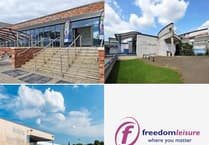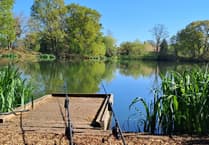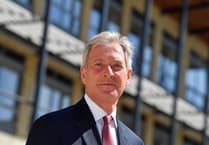TO MARK the 80th anniversary last week of the famous Second World War Dambusters raid using bouncing bombs developed by Sir Barnes Wallis, here we feature extracts from an interview the great man gave the News & Mail in February 1971.
At the time, Sir Barnes, then 83, had just been told by the British Aircraft Corporation (BAC) at Weybridge that he was being retired as an economy move by the firm and also due to his age.
However, he was not deterred, saying the whole of his 67-year working life had been based on long-range communications, and that he would continue his research at his home in Effingham, adding that a friend would provide facilities for wind tunnel and other tests.
He said he hoped to have five to 10 years more work before him, continuing with the design of an aircraft he had been working on for the past two years.
“I am quite convinced that if we are going to hold the Commonwealth together we must be able to get to these places without putting down in foreign countries on the way,” he said.
“If in the event of a cold war or other crisis and these stations were denied to us, we would not be able to reach Australia.”
He proposed that the only way to overcome the problem was to design and build aircraft that would reach distant countries in the shortest possible time without needing to be refuelled on the way, and that there should be automatic control of all aircraft from or by means of ground radio beacons operating on small computers within aircraft.
Sir Barnes was also critical of recommendations at the time to build another London airport, which had been earmarked for the Vale of Aylesbury. He was much against what he said would be the “appalling destruction of villages and historic places”.
The article stated that Sir Barnes started his career in 1905 by training as a marine engineer on the Isle of Wight. Eight years later he joined Vickers Armstrong as an assistant chief designer, working on airships.
However, during the First World War he initially volunteered for the Artists Rifles, only to be recalled to work on airship design with the Royal Naval Air Service.
From 1923 to 1930 he was chief engineer for the Airship Guarantee Company that built the famous R101 airship, then it was back to Vickers in Weybridge where he was responsible for the construction of bomber aircraft.
During the Second World War he spent much time developing weapons of attack, including the bouncing bombs that destroyed Germany’s Mohne and Eder dams, as well as the 10-ton Grand Slam and high-speed Tallboy bombs used against many key targets including the German battleship Tirpitz, the Saumur Tunnel in France and the pens for E-boats - fast attack craft - at Le Havre.
After the war, Sir Barnes became head of aeronautical research and development at Vickers Armstrong, and later continued to work in the same capacity for BAC’s Weybridge division.
In addition to Sir Barnes’ comments, the article stated that some years previously he had been concentrating on supersonic flight and on the practical applications of the variable geometry swing wing principles, including the Wild Goose and Swallow designs. It was said both of these performed excellently in trials.
High-speed models had been made and although they showed their supersonic ability, the government, along with Vickers, had withdrawn support in the mid-1950s.
Sir Barnes tried to obtain financial backing in the US for this British programme, but was unsuccessful, although the general idea “took root in the States”.
The same article included this quote from a spokesman at BAC: “Sir Barnes’ far-sighted, sometimes almost visionary brilliance has always been soundly based upon engineering feasibility. The combination in him of prophet, engineer and advocate has brought worldwide recognition and distinction.”
Sir Barnes Wallis died in 1979 and is buried with his wife Mary (died 1986) in the churchyard of St Lawrence, Effingham. They lived in the village for 49 years.
He was a member of the governing body of the church, a parish councillor and its chairman for 10 years, and also chairman of Effingham Housing Association.
My thanks to Mark Coxhead, who found the interview on microfilm copies of the News & Mail at the Surrey History Centre.
IF you have memories or old pictures relating to the Woking area and its people which you would like to contribute to this page, call David Rose, on 01483 838960, or write to the News & Mail.
DAVID ROSE specialises in what he calls ‘the history within living memory’ of people, places and events in West Surrey, covering towns such as Woking and Guildford. He collects photos and memorabilia relating to the area, and gives illustrated local history talks to groups and societies. For enquiries and bookings, email [email protected].





Comments
This article has no comments yet. Be the first to leave a comment.